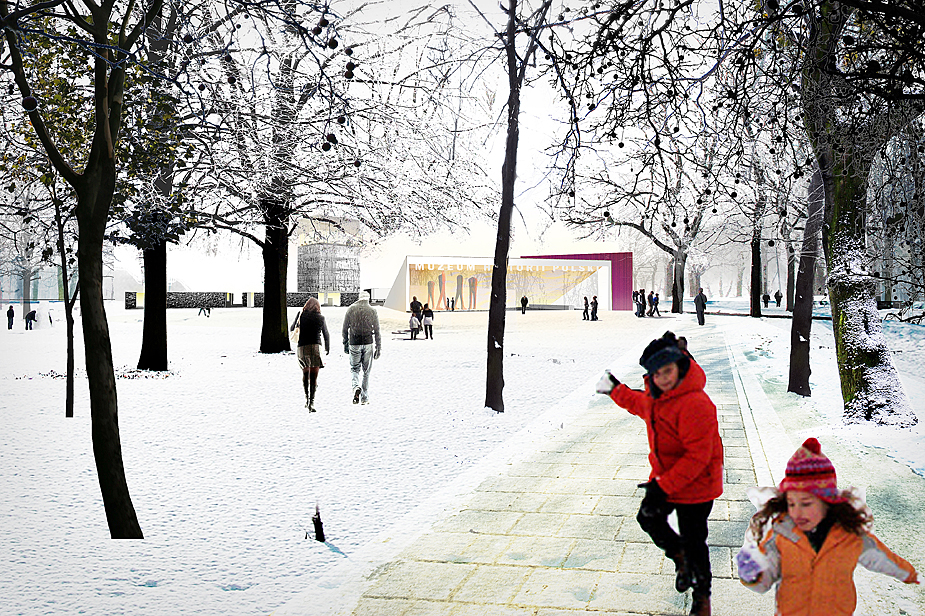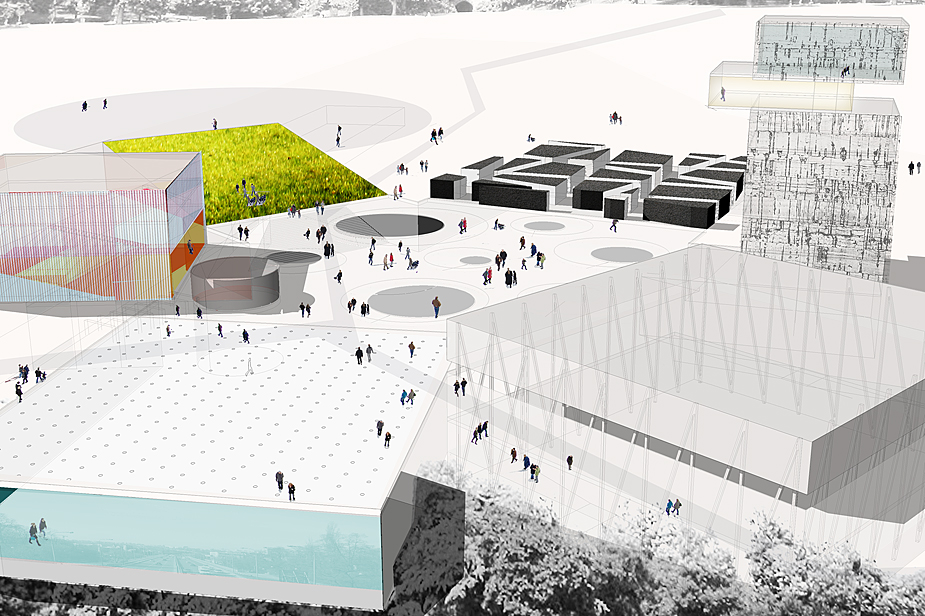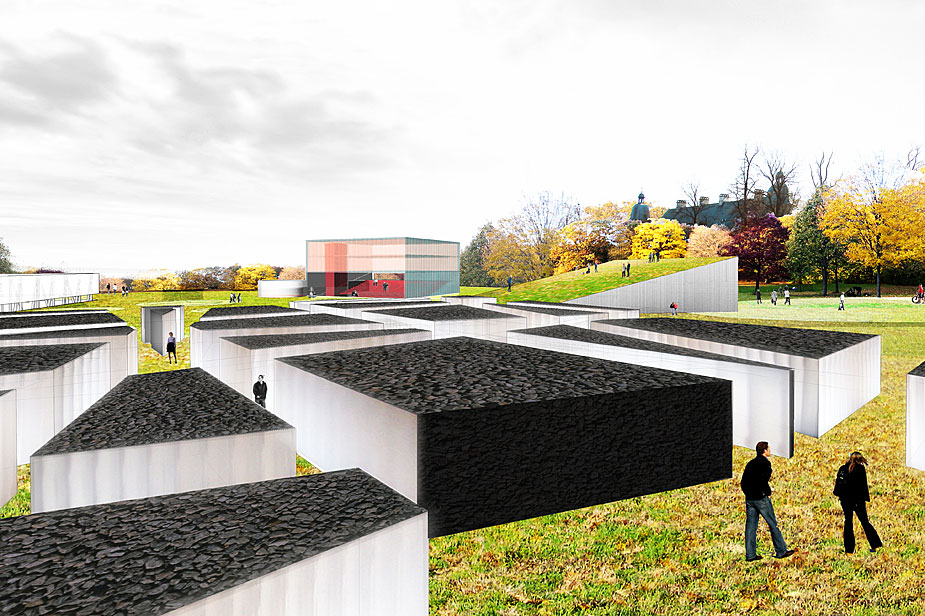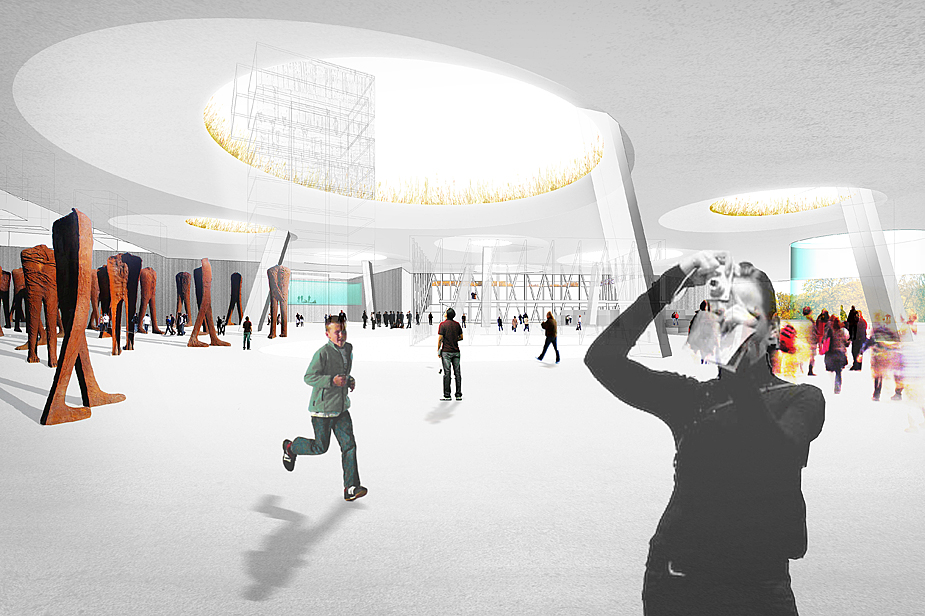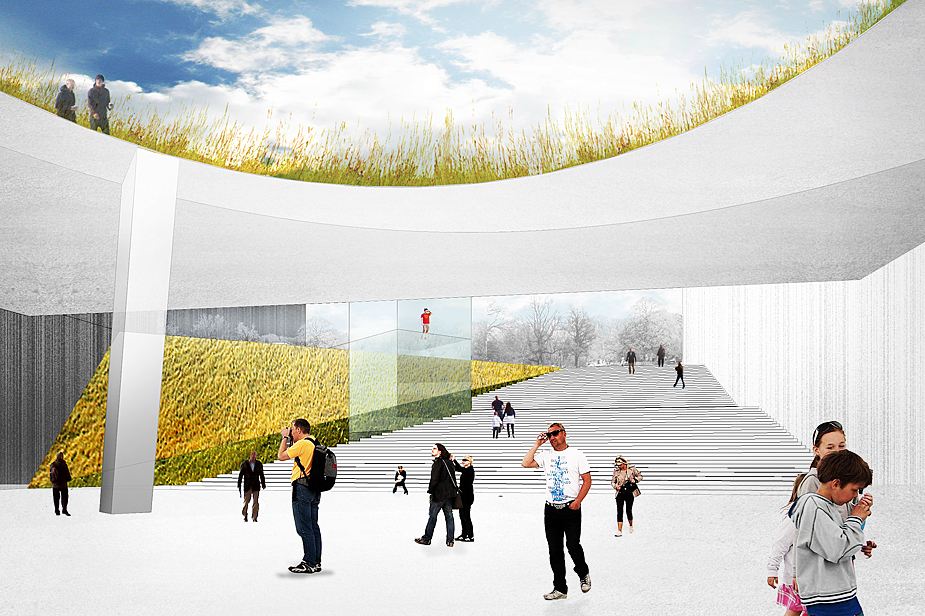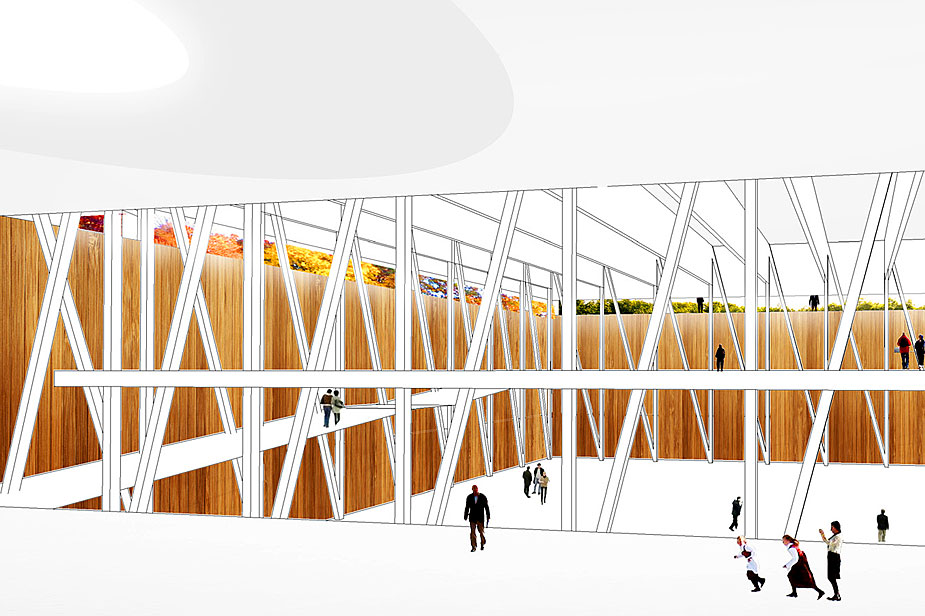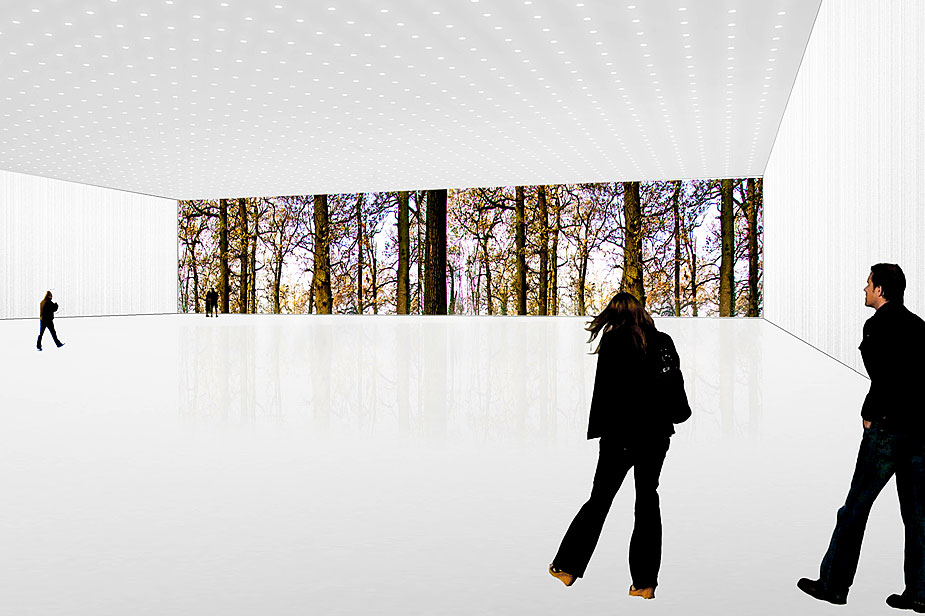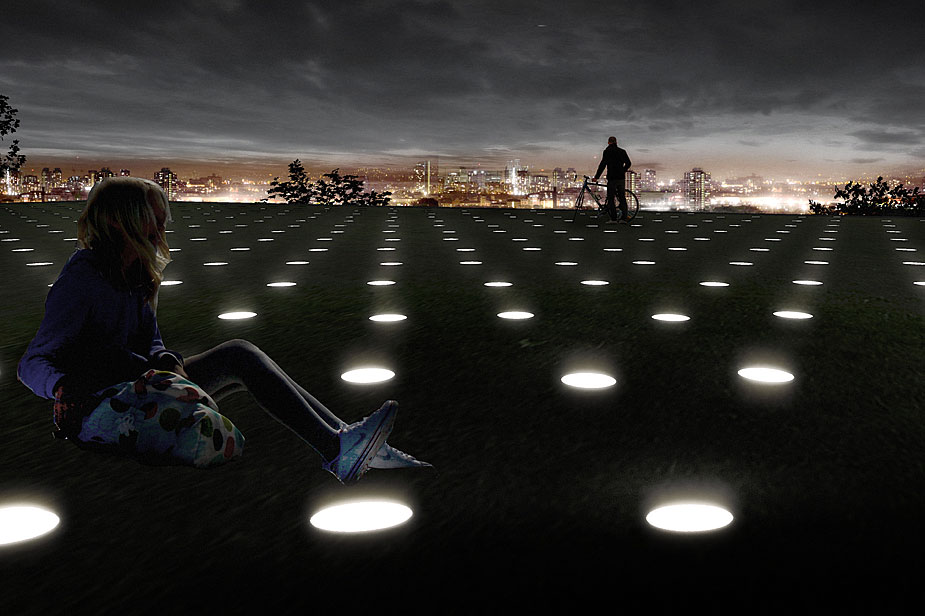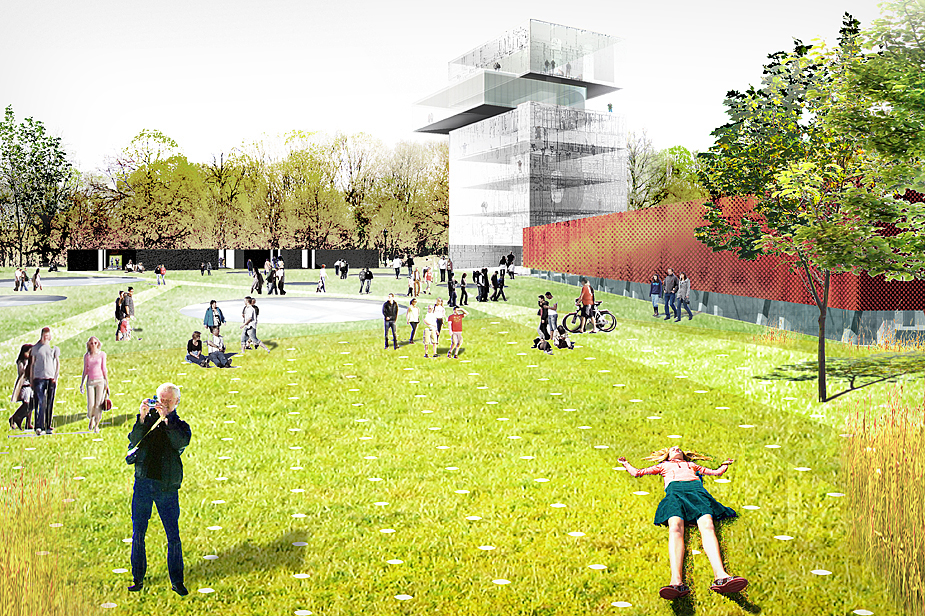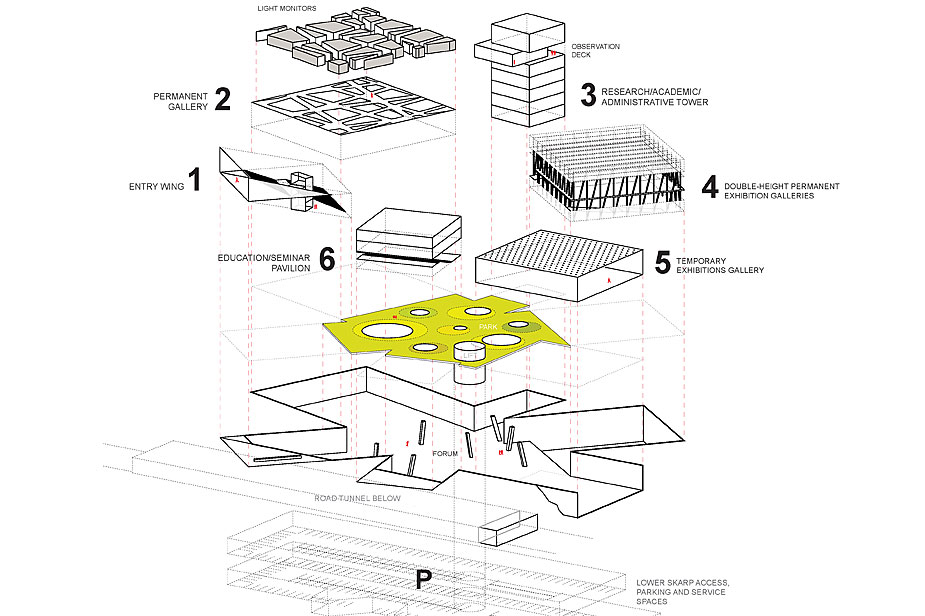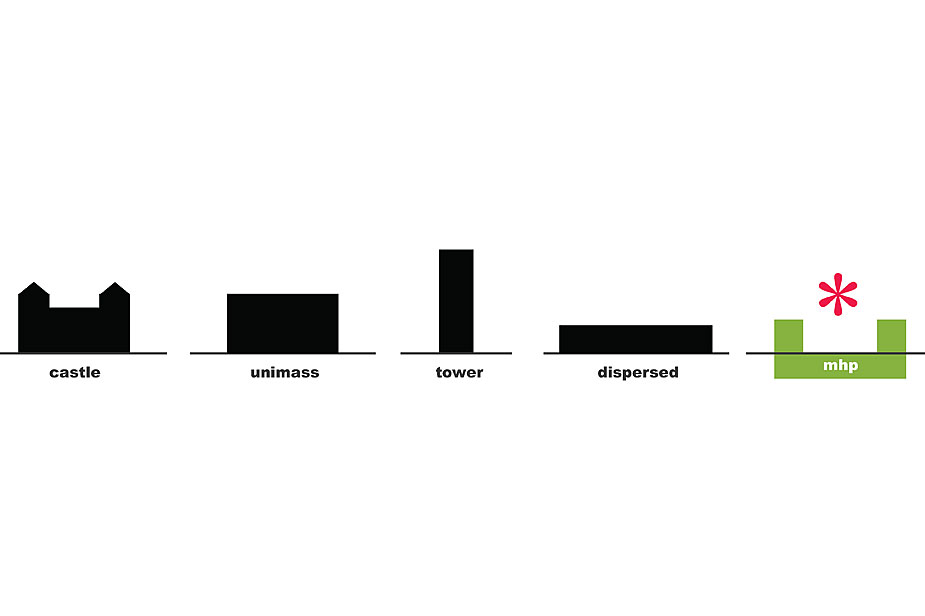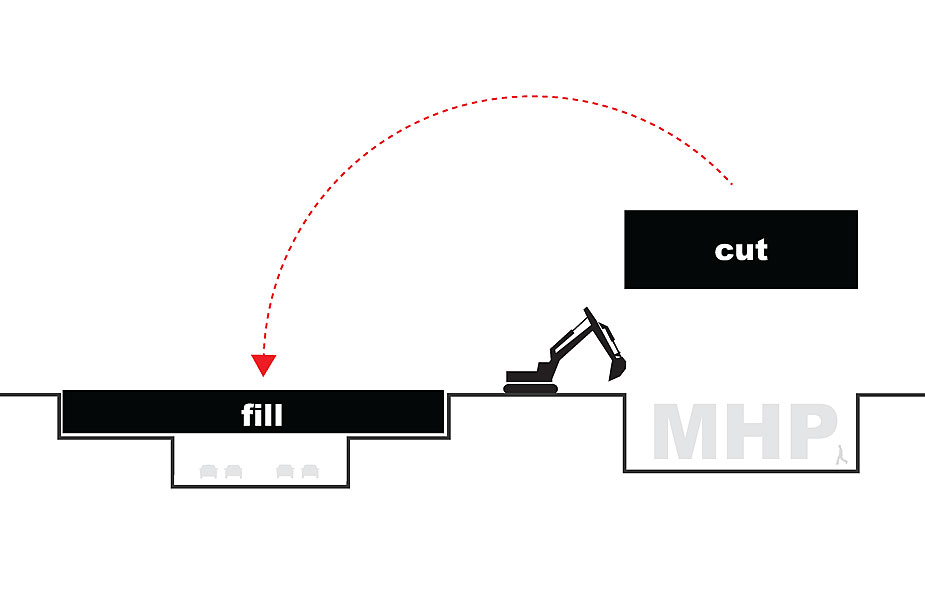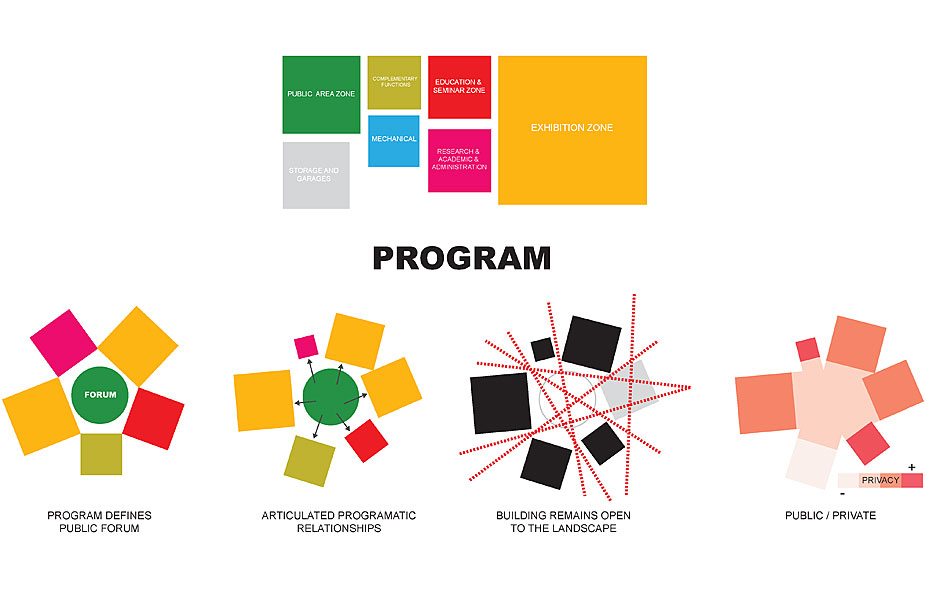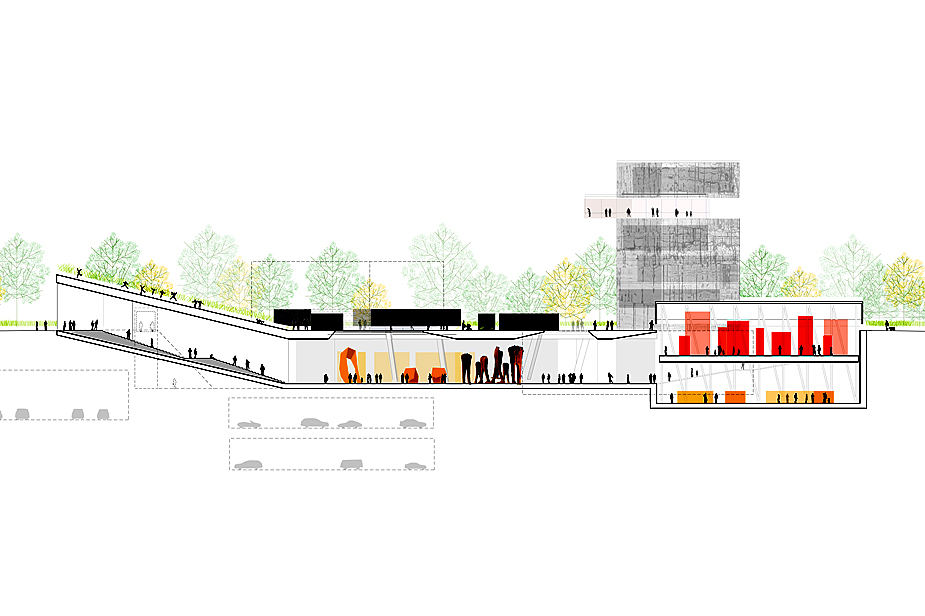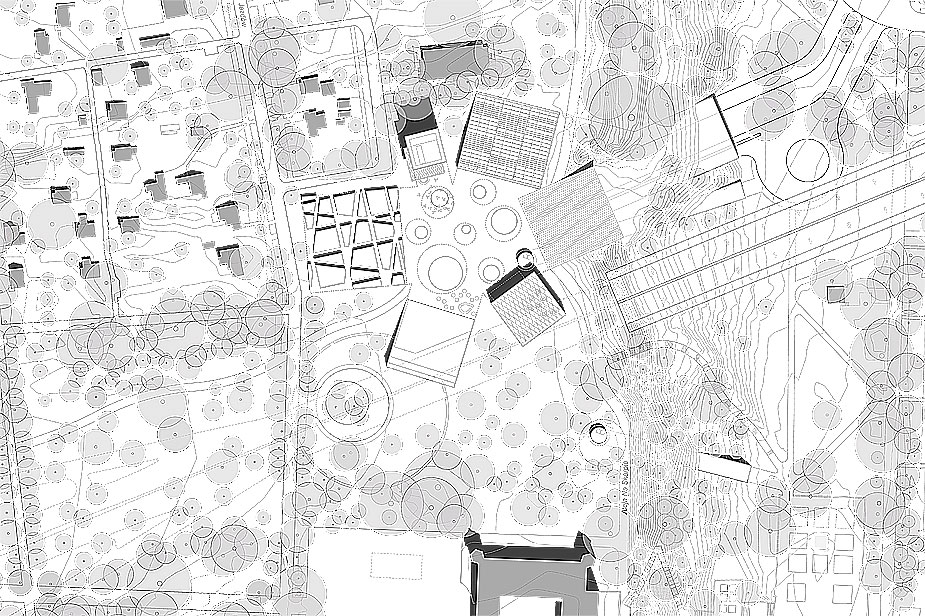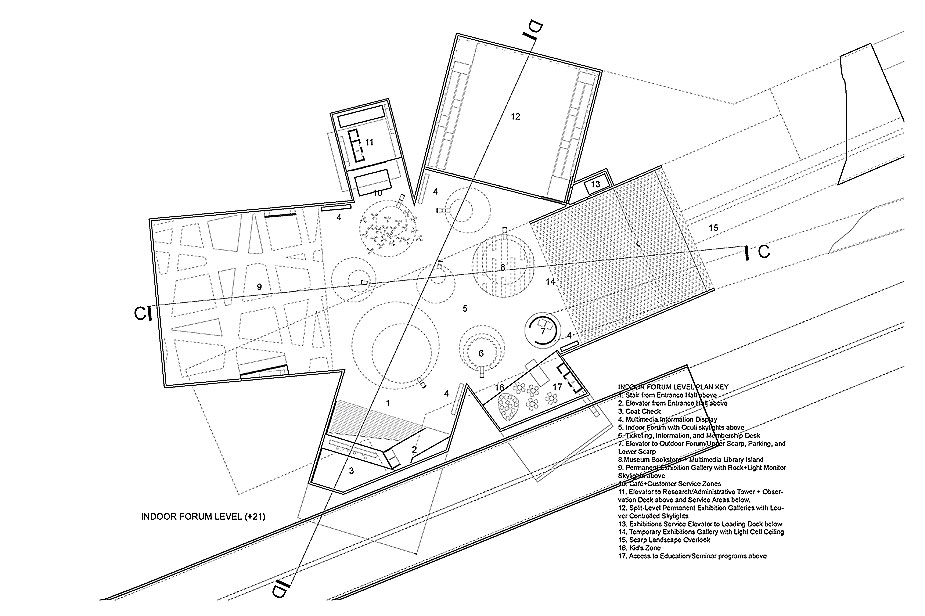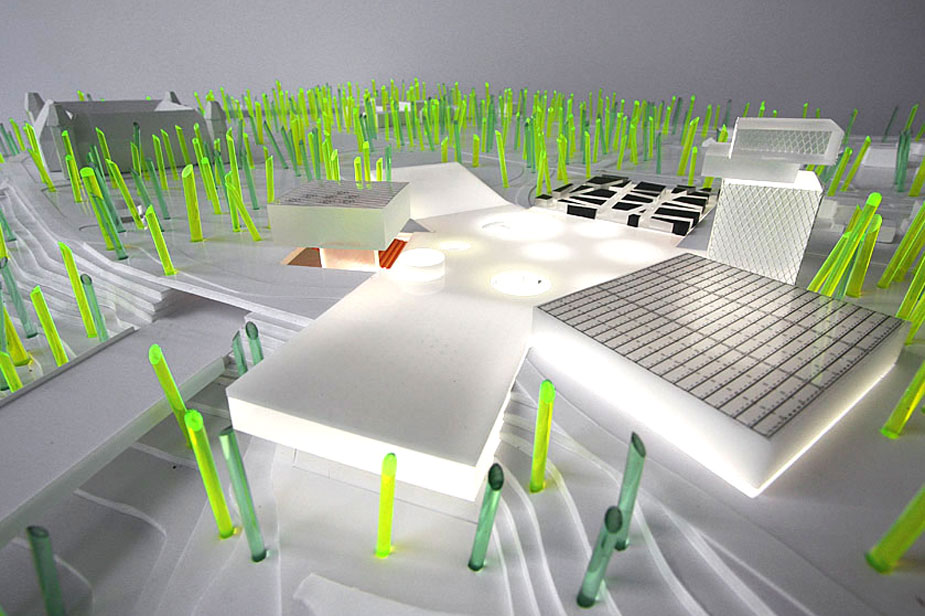SIXPOINTS: THE MUSEUM OF POLISH HISTORY
The Museum of Polish History, Warsaw, Poland
RL's competition entry for a new 321,000 sf, $140m Museum of Polish History campus, Sixpoints, includes extensive permanent & temporary galleries, academic & lecture mini-tower, bookstore & shop, indoor/outdoor cafes, and administrative/observation tower overlooking the dramatic Warszawska Scarp greenbelt. The site is situated adjacent to the historic Ujazdow Castle in central Warsaw, and RL articulated the six major program elements in discrete architectural elements that reduce the visible massing of the project and that each have a specific character and access. These pavilions radiate out from and define an indoor/outdoor public Forum, creating a vibrant, active museum center - a new hub of cultural and educational activity and a common point that connects all parts of the MHP.The Six Pavilions are: (1) Entry Park Pavilion with sloped, exterior amphitheater roof, (2) Rock+Light Permanent Exhibitions Pavilion with monitor skylights, (3) Research/Academic + Administrative Tower Pavilion with indoor/outdoor café and observation deck, (4) Split-Level Permanent Exhibitions Pavilion with adjustable louvered skylight ceiling, (5) Cantilevered Temporary Exhibitions Gallery with landscaped Scarp viewing roof, and the (6) Education Pavilion with its foyer and audience hall open to the park and Outdoor Forum. The Outdoor Forum allows the Park to flow into the MHP and creates a sense of place within the Park.
Eight large sky oculi situated between the Indoor and Outdoor Forums provide views and daylight to the major public spaces. Diffused exhibition gallery lighting for the permanent collection enters a series of both monitor skylights and adjustable louver skylights (creating lighting characteristics similar to Dia:Beacon), and in the Cantilevered Temporary Exhibitions Gallery which pushes south over the Scarp's edge, through a field of overhead lighting cells terminating with a panoramic, deep-framed view of the forested area below.
RL embedded programs deep in the ground, not only to reduce the scale of the complex, but also to reduce energy consumption and to negotiate new connections between the Upper and Lower Scarp levels. Sixpoints maintains the Warszawska Scarp greenbelt and expands the upper park land, thereby minimizing Upper Park level traffic. RL set the primary car and bus drop off at the Lower Scarp level to take advantage of the site's natural sectional drop and allow complete parking access without the use of extensive ramps.
Included in the exhibitions Rough Cuts, Syracuse Architecture/Syracuse University; & New York, New Work, West 4th St Station/Center for Architecture, New York.
Lyn Rice Architects
Principal: Lyn Rice
Associate Principal: Astrid Lipka
Project Designer: Benjamin Cadena
Project Team: Andrew Becker, Hae Won Cha, Jed Geiman
Completed 2009.
